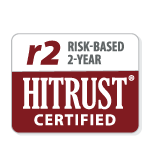By: María Fernanda Levis-Peralta, MPH, MPA, PCMH CCE, CFRE Founder and CEO of Impactivo
Across the island and the world, COVID-19 has taken a toll on our most vulnerable citizens. This includes those who reside in low-income communities or have chronic medical conditions, those who lack consistent access to food and medical services, those who lack access or are unable to use technology, and those who are unable to work from home — or even work at all.
Officially, Puerto Rico has more than 26,760 diagnosed cases of COVID-19 and more than 335 mortalities, and those numbers continue to climb. But we know the real numbers are probably much worse given the lack of reagents available on the island to perform tests. The most recent data from the U.S. Centers for Disease Control and Prevention found that 33% of residents on the island reported fair or poor general health — double the rate on the mainland United States.
Managing this crisis from a health equity perspective starts with tackling social determinants of health (SDOH) and investing in interventions that use data and technology to best identify and serve vulnerable populations. Elderly and patients with chronic conditions are among the most important to reach, especially given the stark barriers to care they have historically faced accessing both healthcare and resources needed to live healthy lives. These are the same groups who are most vulnerable to COVID-19. If we help organize interventions that improve patients’ access to medication, transportation, electricity, and nutrition, we can avoid unnecessary hospitalizations or major medical events.
The first steps are identification and outreach. Using the IMPACTIVOTM Patient Telehealth Readiness Assessment Tool, my team looked at how participants communicated with their doctors and health service providers in the face of the pandemic. More than two-thirds saw telehealth as a useful tool to communicate with their doctors and health service providers during the pandemic. Our results showed that while almost all the population is willing to use telehealth services to keep them safe, in reality, many are not able to access these tools to improve their healthcare outcomes. In the past year, only 7% had communicated through telemedicine or a patient portal. This points to how much work we must do to bridge the wide gaps that so often dictate our healthcare outcomes.
When predictive data is combined with telehealth and wrap-around services that lower barriers to healthcare (such as access to food and transportation), health disparities can be dramatically reduced, and outcomes improved. Predictive data and technology allow us to better identify, reach, and help vulnerable patients who have stopped following their prescribed medical regimens. Under normal circumstances, only 50% of patients take their medications as prescribed, a number that has likely increased because of disruptions in medical care and a worsening economy. By leveraging predictive data and telehealth services to find and reach these vulnerable patients, clinicians are often able to connect them to healthcare providers and wrap-around support services such as nutritious food and transportation. These services reduce common barriers to taking medication and allow them to live healthier lives. And, where patients are unable to obtain their medications even after addressing these barriers, providers can work with pharmacies that prioritize these patients to arrange home-delivered medicines or other arrangements.
Having a trusted clinician that focuses on prevention, manages your treatment and refills your prescriptions continually is very much correlated with whether or not you are addressing chronic conditions and illnesses or ignoring them and ending up sicker, hospitalized or worse, dead. Recent data already shows an increase in excess deaths in Puerto Rico from non-COVID-19 patients. However, by improving access to healthcare, social supports and medicine, we can save lives by preventing preexisting conditions from compounding and making the effects of the virus worse.
Doctors, pharmacists, health plans, and community organizations need to work together to comprehensively tackle social determinants of health — especially when it comes to identifying and connecting vulnerable patients to telehealth and wrap-around support services. This can dramatically improve health outcomes on the island and reduce complications from COVID-19. We must take immediate action to deploy the resources to reduce Puerto Rico’s health disparities to ensure all citizens have the chance to live happy and healthy lives.
María Fernanda Levis-Peralta is the CEO of Impactivo, an impact-driven health consulting firm committed to transforming health systems. María is a consultant for health centers, hospitals, pharmaceutical and insurance companies, and governments in New York, Washington, D.C. and Puerto Rico on issues related to health systems, quality, policy and financing.
Access the original published version here: La tecnología puede ayudar a reducir las disparidades de salud en Puerto Rico via El Nuevo Día
